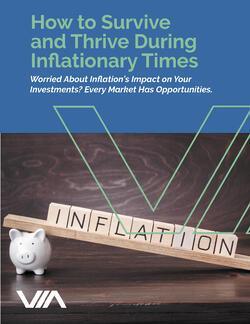

Bear Markets
Financial Market Commentary, July 2022
Bear markets are part of investing in the stock market. They happen about once every 4 years and can bring uncertainty and anxiety to investors. In this piece we offer a better perspective on the current bear market, advice on what actions to take, mistakes to avoid, and thoughts on when it will end.
Perspective
Bear markets are defined as a 20% or greater decline in a broad stock market index over a sustained length of time. Since 1928 the S&P500 has experienced twenty-six bear markets. The average decline has been 35.6%, the average duration has been 289 days. The current stock market entered bear territory in June with the current market down 19% from the start of 2022 to late June. The duration has been six months. Compared to history, the current bear market is more than half over in both severity and duration.
Since World War II, on average bear markets have taken 13 months to go from peak to trough and 27 months to get back to breakeven. The key is to have a plan to successfully ride out the bear market and, if possible, let it work to your advantage.
Appropriate Actions
- Stick with your long-term asset allocation. Gradually add to stocks as they move to lower prices to maintain target asset allocation weights.
- Tax loss harvest. If you have or expect to realize capital gains this year, during bear markets it is easier to sell a stock at a loss to offset gains and lower taxes. Invest the proceeds in a similar investment.
- Take advantage of the lower prices to move the now lower-valued assets. For example, if you are thinking of rolling over IRA or 401(k) assets into a Roth, it is better to do it when values are lower. If the value later increases in the Roth, there is no tax on that gain when it is distributed. Or if you want to get out of a current investment portfolio and into a new one, less capital gains will be realized following a market decline.
- Always talk with your accountant or tax professional for the best advice for your situation.
- The significant increase in yields for fixed income investments makes these investments more appealing. If clients have cash on the sidelines, now is a suitable time to fill out their diversified fixed income investments.
- Unwise actions include selling out of stocks or risky assets after significant price declines based on current events. That would make permanent what could be just a temporary loss in value. Stick with your long-term plan. If the loss in value has been beyond your threshold, then you have been taking the wrong level of risk. Work with your advisor to thoughtfully migrate the risk level over time.
When will it end?
No one knows for sure. What we do know is that some of the biggest gains come from sharp upward market moves off the bottom. It is not likely to be successful to wait until the market starts to act better, then get back in. You will have missed some of the biggest upward returns.
What are catalysts to look for that will bring markets out of the bear market?
- A realization that there is a limit to how much higher interest rates can go. The Federal Reserve can only do so much to fight inflation. What will work to beat inflation is a combination of factors including a fiscal policy that is not doing the opposite of the fed. policy. History shows federal reserve policy alone has not been effective to stop entrenched inflation. As a borrower, the U.S. government simply cannot afford continued higher interest rates now that government debt is over 100% of GDP. In the 1980s debt was 25% of GDP when interest rates climbed even more than today. Currently for each one percent that interest rates climb it costs an additional $250 billion annually of interest expense. At some point this becomes not acceptable, forcing other means to combat inflation. Fear of higher interest rates pushes down stock valuations and stock prices.
- Goods become more available taking pressure off supply chain related inflation pressures. In certain sectors it is happening already. Target and Nike both reported significant increases in their inventory levels which required selected sharp price discounts to clear the inventory. Whatever can help inflation is good for the stock market.
- People return to the workforce helping to lower inflation and relieve supply chain issues. Rising inflation along with lower 401k values have put household budgets under increasing pressure and retirement prospects on hold for many people. At the margin, this will likely push more people back into the workforce.
Be patient. To reach an average bear market it would involve an additional 10-15% decline over the next seven months. Focus on your long-term goals and realize that things usually look darkest at the bottom.
ViaWealth, LLC is a Registered Investment Adviser. Information in this article is for educational purposes only and is not intended to be an offer or solicitation for the sale or purchase of any specific securities or other types of investments. Investing in the securities markets involve risk of principal and unless otherwise stated, returns are not guaranteed. Be sure to consult with a qualified financial adviser and/or tax professional before making any financial decisions. Past performance is not indicative of future performance.


